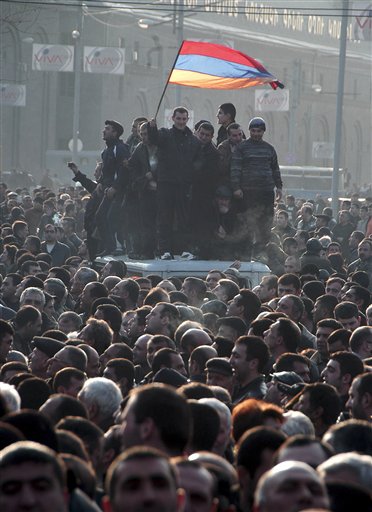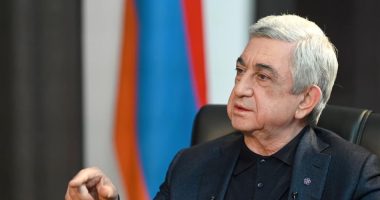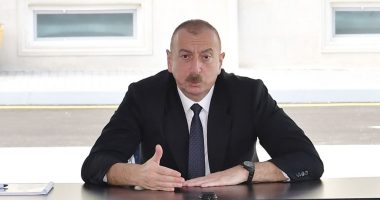

By Armen Arakelyan
The public rallies organized by Tigran Karapetyan, the periodic protests staged against the Armenian government, the president and the mayor’s office, verify that a new political impetus or force is taking shape in Armenia – the marginalization of the masses; i.e. the formation of an Armenian lumpenproletariat. (In German the word literally means “rag proletariat”).
This gradual marginalization process of society continues in Armenia. What are the causes and where might it lead? First, this societal marginalization is a product of Armenian government policy, which at its core results in the deepening of the social divide. Some might argue that it results from the government’s inability to halt the process.
The economic, social and judicial policies of the regime are directed towards satisfying the interests and requirements of a very specific elite segment of society and, as a rule, aims towards the monopolization of all essential commercial and economic sectors.
As a result, small and medium sized businesses are disappearing. Thus, the middle class is vanishing as well. Society is being divided into rich and poor segments. The former, comprised of a limited segment of monopoly oligarchs are becoming the only practical guarantee for the retention of power by the authorities. The ranks of the poor are being filled with ever increasing segments of society marginalized from that government and its various power bases.
Given such proportionality, it is this latter sector that is taking the full brunt of each deterioration in social life based on objective conditions – inflation, low wages, etc.
This actual anti-socialization also becomes possible by setting disparities within the human rights defense field. Informal divisors are placed between the privileged and those remaining below who shoulder the full burden of responsibility.
This state of affairs that has arisen in Armenia pushes a wide variety of social issues to the front and center – guaranteeing minimal conditions of human life and defense of certain inalienable rights. This current reality pushes all others to the backburner – all national, political, ideological and cultural issues.
In the past, if one occasionally saw small groups of people protesting in front of various government buildings that their rights had been violate, now such sights are a daily occurrence.
Moreover, the threats voiced by these disgruntled individuals and groups to take drastic action are growing.
It is clear that a resistance movement has started from these once isolated and limited actions that still remain mostly unorganized. Any type of consolidation remains restricted to individuals sharing the same narrow set of problems, people from similar social “castes”. Thus, it is too premature to speak about any type of mass social movement.
This is due to two realities. First, since this budding movement is spontaneous it lacks any real political content and isn’t being lead by any political force. Second, the traditional Armenian mentality of – “I don’t get involved with others” – also prevents needed organizing and mobilization. Thus we wind up with street vendors, incensed that they can no longer ply their wares, protesting separately; those who bring in goods from Turkey, angry with a doubling of freight rates, protesting on their own; and disgruntled community leaders doing their own thing.
Nobody supports the other. Nor do the protestors want, or understand the need, to mobilize a common front for struggle.
Thus, within the ruling circles, the growing belief is that there isn’t really anything serious to worry about. Even if these protests of separate social sectors expand, they will never lead to a all-encompassing movement of social unrest. This also allows the authorities to keep neglecting the underlying causes for the protests and their cause and effect links.
To a certain degree, the government is correct in its approach. The problem is that the political forces still remain indifferent to the impulses arising from the society automatically consolidating via the process of marginalization. Certain forces are simply not capable of assuming leadership of the movement, given that they find themselves in a insignificant position.
The problem facing the government and the ruling coalition forces is not to lead this movement but to extinguish it, or at best, to keep it manageable. The regime would like to avoid any potential headaches if possible.
With this aim in mind, conveniently exploiting the “Tigran Karapetyan phenomenon” is a true brainstorm. On the one hand, the blossoming social protest movement is discredited and deprived of any content, and on the other, those segments of society caught up in the phenomenon are manipulated and depoliticized.
In Armenia today, only three forces have the potential to place the movement on a positive political track: the ARF, the Heritage Party and the HAK. The first two are clearly in a wait and see holding position and have no overwhelming desire to get active. Then too, they simply aren’t able to.
HAK (Armenan National Congress) possesses all the requirements to assume a leadership role for the burgeoning movement. But it displays a principally incorrect approach regarding it. The HAK sees the movement as merely an uncontrollable “lumpen” mass, and not as a movement with which to politicize society.
In reality, however, HAK is waging a struggle against the same underlying causes that are at the core of the marginalization process. What has started is also a struggle for civil rights, draped in a veil of super-socialized issues.
It is also clear that this spontaneous social movement, if placed on a systematic, institutional basis, can be infused with real political content because, no matter how tragic, that segment of society is being marginalized that should perform the role of the middle class.
HAK, by artificially inserting a differentiation between these two categories, is simply depriving itself of the opportunity/possibility of becoming active and, in general, is alienating itself from the real social demands of the people. This just might lead to the eventual marginalization of HAK itself because the self-serving nature of its actions will become evident.
Recently, we learnt that a session of the HAK’s economic affairs committee convened and that members discussed such matters as the forcible cessation of street trade and recent governmemt steps leading to the illegal increase of custom duties by the government and the monopolization and oligarchic domination of the economy.
It would thus seem that the HAK is trying to crystallize its positions and possible solution options.
This signifies that the possibility still exists for the HAK to assume leadership of the movement.
Editor’s Note:
1) Marxian and even some non-Marxist sociologists now use the term to refer to those they see as the “victims” of modern society, who exist outside the wage-labor system, such as beggars, or people who make their living through disreputable means: prostitutes and pimps, swindlers, carnies, drug dealers, bootleggers, and bookmakers, but depend on the formal economy for their day-to-day existence. (Wikipedia)
2) Franz Fanon described the lumpen-proletariat as “one of the most spontaneous and the most radically revolutionary forces of a colonized people.” However, it is an ignorant and desperate class, particularly susceptible to being co-opted by counterrevolutionary forces. Therefore, he claimed, education of the dispossessed masses should be central to revolutionary strategy. (Wikipedia)










